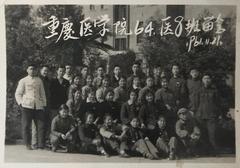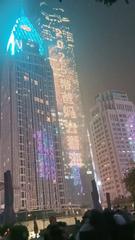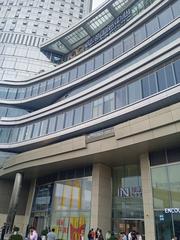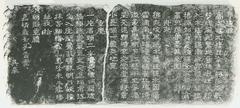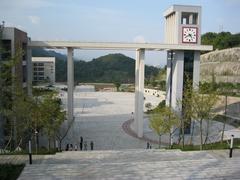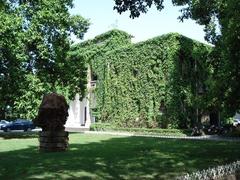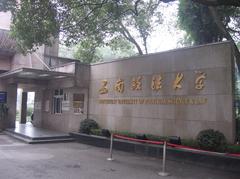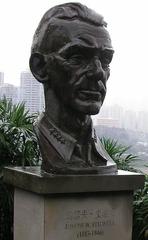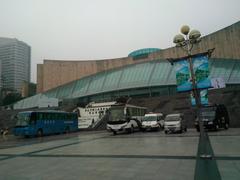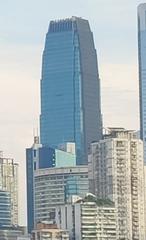Laitan Ancient Town: Visiting Hours, Tickets, and Travel Guide to Chongqing’s Historical Gem
Date: 15/06/2025
Introduction
Laitan Ancient Town, located in the northeastern part of Hechuan District, Chongqing, is a living testament to over a millennium of Chinese history. Founded during the late Tang Dynasty and reaching its height through the Song and Qing periods, Laitan stands out for its strategic military architecture, religious heritage, and unique riverside culture. Its well-preserved streets, city walls, temples, and defensive structures make it one of Chongqing’s most treasured historical sites (Chinatripedia; MeiyaTravel; China Dragon Tours).
This guide will help you discover Laitan’s origins, key attractions, visiting hours, tickets, travel tips, culinary highlights, festivals, and practical advice for a rewarding visit.
Table of Contents
- Origins and Historical Evolution
- Military and Defensive Significance
- Architectural Heritage
- Religious and Cultural Landmarks
- Economic and Social Role
- Visitor Information: Tickets, Opening Hours, and Transportation
- Artistic and Scenic Value
- Living Traditions and Local Culture
- Recognition and Preservation
- Frequently Asked Questions (FAQs)
- Historical and Cultural Landmarks
- Scenic and Architectural Attractions
- Cultural Experiences and Activities
- Natural Surroundings and Outdoor Activities
- Practical Visitor Information
- Notable Nearby Attractions
- Culinary Highlights
- Festival Highlights
- Practical Tips
- Health and Comfort
- Sustainable and Responsible Travel
- Useful Contacts
- Itinerary Suggestions
- Related Articles
Origins and Historical Evolution
Laitan Ancient Town traces its roots to the late Tang Dynasty (618–907 CE), thriving as a riverside trading post during the Song Dynasty thanks to its location on the Qu River (Chinatripedia). By the Qing Dynasty, Laitan had evolved into a fortified and bustling commercial hub, its cruciform urban plan reflecting both strategic defense and sophisticated town planning (MeiyaTravel).
Military and Defensive Significance
Naturally fortified by cliffs and the Qu River, Laitan was further strengthened during the Qing Dynasty with the construction of city walls, stone gates, and the unique “Wengcheng” barbican—Chongqing’s only such structure (China Dragon Tours). Cliff-carved military caves further highlight the town’s defensive ingenuity.
Architectural Heritage
The town features over 400 well-preserved tile-roofed houses from the Ming and Qing dynasties, lining narrow bluestone alleys (Chongqing Deep Tour). Key landmarks include:
- Wengcheng Barbican: Defensive Qing Dynasty gateway.
- Wenchang Palace: With a historic stage and exquisite woodwork (China Dragon Tours).
- Ming Dynasty Archway: Ceremonial relic.
- Ancient City Wall: Snaking along cliffs for dramatic effect (Trip.com).
Laitan is recognized as a Sichuan Provincial cultural heritage site, reflecting ongoing preservation efforts (Chinatripedia).
Religious and Cultural Landmarks
Historically, Laitan was home to the “Three Palaces and Eighteen Temples,” with Wenchang Palace serving as a Confucian study center, and the Zhanye and Huilong Temples as Buddhist hubs. Ancient Buddha cliff carvings and venerable banyan trees further enhance the spiritual atmosphere (MeiyaTravel).
Economic and Social Role
Laitan’s riverside wharf made it a key trading center during the Qing Dynasty, with thriving markets and a lively festival scene. Today, the town retains a tranquil, time-honored charm (Chongqing Deep Tour).
Visitor Information: Visiting Hours, Tickets, and Transportation
- Opening Hours: Daily, 8:00 AM–6:00 PM.
- Tickets: Adults, 50–60 RMB; discounts for seniors, students, and children.
- Getting There:
- Bus or taxi from central Chongqing (1.5–2.5 hours) (Trip.com).
- Scenic boat rides via the Qu River.
- Accessibility: Historic terrain can be challenging; sturdy shoes recommended.
- Best Time to Visit: Spring and autumn.
Artistic and Scenic Value
Laitan’s riverside setting, dramatic cliffs, and historic architecture create a poetic landscape, particularly evident in its famed “Eight Sceneries” (Chongqing Deep Tour).
Living Traditions and Local Culture
Enjoy local delicacies like old dried tofu, Qujiang fish, and homemade rice wine, and explore artisan workshops in bamboo weaving, wood carving, and more (MeiyaTravel). The Tianlong Valley Tourist Resort and seasonal festivals add to the town’s living culture (Chongqing Deep Tour).
Recognition and Preservation
Laitan is among China’s first batch of “Chinese Historical and Cultural Famous Towns” and is recognized for its authentic preservation (MeiyaTravel; Chongqing Deep Tour).
Historical and Cultural Landmarks
Laitan Ancient Town: A Living Chronicle
Stroll bluestone streets lined with Ming and Qing wooden houses. Explore ancestral halls, temples, and the preserved city gate. The town’s riverside layout and surviving guildhalls reveal its commercial and military past.
Religious and Spiritual Sites
The Guanyin Temple, perched above the river, is a spiritual focal point, while smaller shrines and incense-filled halls reflect the town’s devotional traditions.
Scenic and Architectural Attractions
Riverside Promenade and Ancient Wharf
Enjoy panoramic river views and tranquil walks along the willow-lined promenade. The ancient wharf, once a bustling trade hub, now offers a serene vantage point, especially at sunrise and sunset.
Traditional Streets and Markets
Browse handcrafted souvenirs, sample local snacks, and soak up the lively market atmosphere along Laitan’s main street (The Go Guy).
Ming and Qing Dynasty Residences
Step inside restored homes to see period furnishings and learn about historical domestic life.
Cultural Experiences and Activities
Folk Performances and Festivals
Enjoy Sichuan opera and folk performances during major festivals, as well as lantern displays and river races during the Lantern and Dragon Boat Festivals.
Tea Houses and Local Cuisine
Relax in traditional teahouses and savor local specialties such as Laitan fish hotpot, river shrimp, and handmade rice cakes (ChinaTravelly).
Handicrafts and Artisan Workshops
Visit bamboo weaving, wood carving, and paper-cutting workshops for hands-on cultural experiences.
Natural Surroundings and Outdoor Activities
River Cruises and Boat Tours
Take a short cruise from the ancient wharf for scenic views of Laitan’s riverside architecture.
Hiking and Scenic Overlooks
Hike the surrounding hills for panoramic vistas of the Jialing River valley and spot local birdlife.
Practical Visitor Information
Visiting Hours and Tickets
- Open daily: 8:00/8:30 AM–6:00 PM.
- Adult tickets: 50–60 RMB with available discounts.
- Purchase tickets at the gate or online.
Accessibility and Transportation
- 1.5–2.5 hours from Chongqing by bus, taxi, or car.
- Nearest train station: Hechuan District.
Visitor Amenities
- Accommodations: Guesthouses and small hotels, often in historic buildings.
- Facilities: Tourist info centers, restrooms, bilingual signage.
Tips for a Memorable Visit
- Wear sturdy shoes for cobblestone streets.
- Bring cash for small purchases.
- Respect temple etiquette and ask before photographing locals.
- Book early during festivals.
Notable Nearby Attractions
- Hechuan Ancient Town: Explore more ancient streets and temples.
- Diaoyu Fortress: Famous for its Mongol resistance, featuring historic walls and a museum (Chongqing Attractions).
Culinary Highlights
Laitan’s food scene is a microcosm of Chongqing cuisine—famed for its málà (spicy and numbing) flavors (ChinaTravelly; Living Nomads). Don’t miss:
- Chongqing Hotpot: Fiery broth filled with meats, tofu, and vegetables (East China Trip).
- Chongqing Xiaomian: Spicy noodles topped with minced pork.
- La Zi Ji: Crispy chili chicken.
- Jiangtuan Fish: Fresh river fish grilled and simmered in spicy broth.
- Suan La Fen: Tangy and spicy sweet potato noodles.
- Local Sweets: Ciqikou sesame candy, BBQ skewers.
For authentic experiences, seek out family-run eateries and bustling food markets (TravelSetu).
Festival Highlights
Laitan participates in Chongqing’s vibrant festival calendar. Key events include:
- Ciqikou Temple Fair: Folk performances and crafts (January/February).
- Fengdu Temple Fair: Religious rituals and folk culture (April).
- Changshou Lake Tulip Festival: Spectacular spring blooms (Feb–April).
- Chongqing Food Festival: Culinary celebrations (October).
- Tujia “Bizi Ka” Folk Show: Minority music and dance (November).
- Jinfo Mountain Skiing: Winter sports (December).
Tips: Book accommodations early for major festivals, dress for the weather, and respect local etiquette (Chongqing Deep Tour; MyTravelBuzzG).
Frequently Asked Questions (FAQs)
Q: What are the visiting hours for Laitan Ancient Town?
A: Open daily, 8:00/8:30 AM–6:00 PM.
Q: How much are the tickets?
A: Adult tickets are 50–60 RMB, with discounts for eligible visitors.
Q: How do I get to Laitan from Chongqing?
A: By bus, taxi, or car (1.5–2.5 hours); boat rides are also possible.
Q: Is the town wheelchair accessible?
A: Main areas are accessible, but expect uneven cobblestone streets; guided tours are recommended for those with mobility issues.
Q: Are guided tours available?
A: Yes, bookable in advance online or via local operators.
Practical Tips and Travel Advice
- Language: Basic Mandarin or a translation app is helpful.
- Payments: Carry RMB; not all vendors accept cards.
- Safety: The area is safe but be vigilant with valuables and watch your step on uneven streets.
- Restrooms: Public facilities available; carry tissues and sanitizer.
- Health: Hydrate, wear sun protection, and use insect repellent in summer.
- Sustainability: Support local businesses, dispose of waste properly, and respect the heritage site.
Itinerary Suggestions
- Half-Day: Explore streets, Erfo Temple, and riverside promenade.
- Full-Day: Combine Laitan with Diaoyu Fortress and Three Rivers Confluence.
- Overnight: Stay in a guesthouse for evening ambiance and local cuisine.
Summary & Call to Action
Laitan Ancient Town is a captivating destination where history, culture, and natural beauty come together. From ancient defenses to culinary adventures, it offers an immersive journey through Chongqing’s heritage. Plan your visit using the Audiala app for up-to-date maps, bookings, and travel tips. For more inspiration, follow us on social media and explore our related guides on Chongqing’s ancient towns and festivals.
References
- Laitan Ancient Town Visiting Hours, Tickets, and Historical Highlights in Chongqing, 2025, Chinatripedia
- Laitan Ancient Town Guide, 2025, MeiyaTravel
- Laitan Ancient Town in Hechuan District, Chongqing, 2025, China Dragon Tours
- Laitan Ancient Town: One of the Most Beautiful Villages in China, 2025, Chongqing Deep Tour
- Laitan Ancient Town Attractions and Visitor Information, 2025, Trip.com
- 25 Best Things to Do in Chongqing, China, 2024, The Go Guy
- Top 10 Must Eat Chongqing Foods: A Local’s Guide, 2025, ChinaTravelly
- Monthly Highlights and Must-See Events in Chongqing, 2025, Chongqing Deep Tour
- Beautiful Ancient Towns in Chongqing, 2025, Trip.com Blog
- Chongqing Showcase: Hechuan, The Lands of Three Rivers and Historical Charm, 2020, iChongqing
- Food in Chongqing, 2025, TravelSetu
- Chongqing Tourism Guide, 2025, Living Nomads

